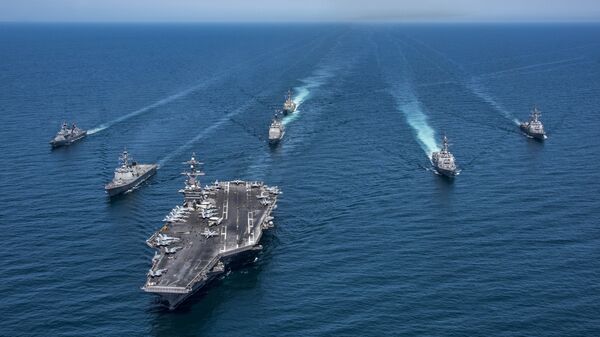The US Navy has commented on the recent passage of its warship near the contested Parcel Islands, after Beijing objected to the manoeuvre in the highly-sensitive South China Sea.
“China, Taiwan, and Vietnam each claim sovereignty over the Paracel Islands,” the US Navy said in a statement. “The unilateral imposition of any authorisation or notification requirement for innocent passage is not permitted by international law, so the United States challenged these requirements.”
The US military has sailed the guided-missile destroyer USS Wayne E. Meyer near the Paracel Islands (called Xisha Islands in Chinese) this week in a show of defiance against Beijing’s territorial claims in the South China Sea. The Chinese Defence Ministry stated the warship had “trespassed into waters off China’s Xisha Islands without the permission of the Chinese government”.
China’s island and maritime claims cover most of the South China Sea and are contested in places by Brunei, Indonesia, Malaysia, the Philippines, Taiwan, and Vietnam. Most of the region is still controlled by China, which does not recognise the rulings of international bodies regarding its claims in the area.
The US, along with several Western nations such as Britain, Canada and France, conducts freedom of navigation patrols in the sea, acting as if the waters surrounding the contested islands and reefs were not part of China, but fell in line with international law, which grants the right of innocent passage to vessels of any nation.
The USS Wayne E. Meyer last month also sailed past the China-claimed Fiery Cross and Mischief Reefs as part of a similar freedom of navigation operation, which triggered a protest from Beijing. This week, China warned the UK against conducting a similar mission, saying it would be viewed as “hostile action”.
The United States also accuses China of expanding its military reach in the region, including via the construction of military installations on artificial islands. China insists that its installations in the South China Sea serve defensive purposes and are being used primarily for scientific research and maritime safety programmes.




